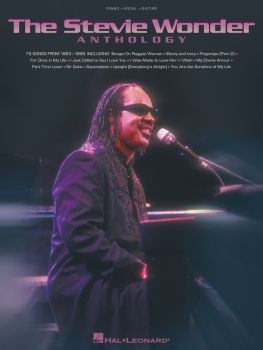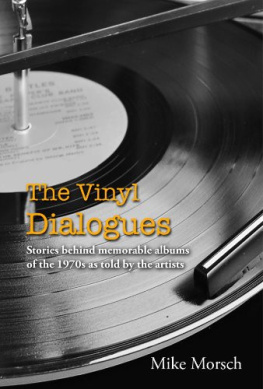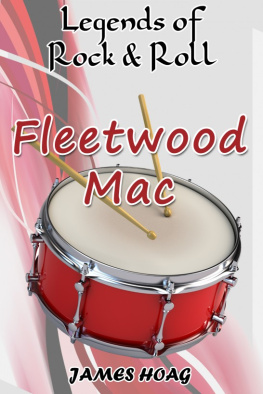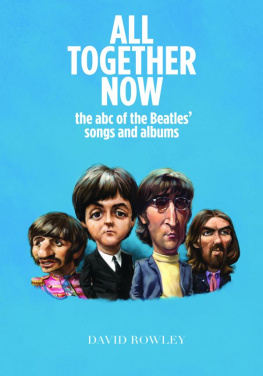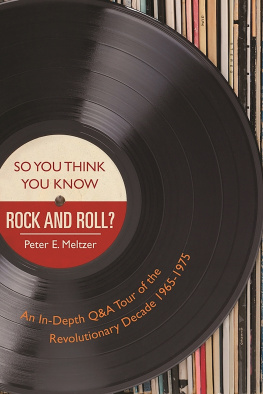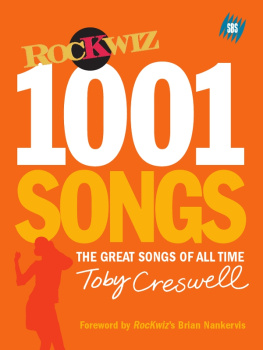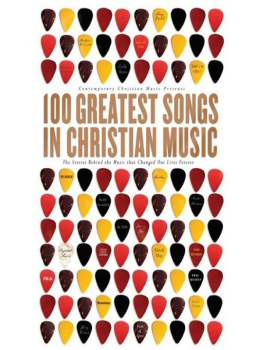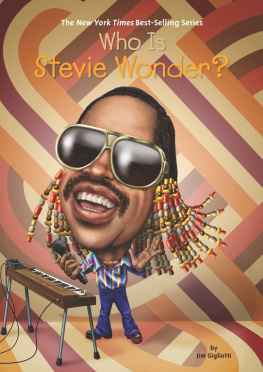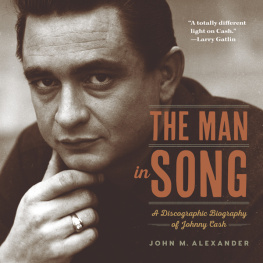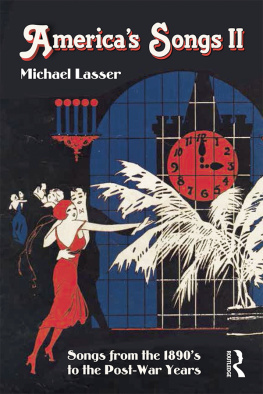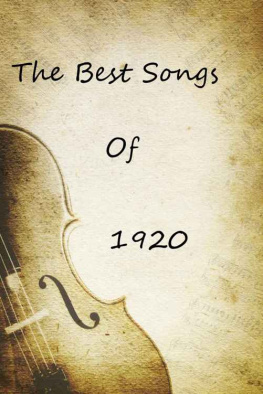
Songs in the Key of Life
Praise for the series:
It was only a matter of time before a clever publisher realized that there is an audience for whom Exile on Main Street or Electric Ladyland are as significant and worthy of study as The Catcher in the Rye or Middlemarch.; The series, which now comprises 29 titles with more in the works, is freewheeling and eclectic, ranging from minute rock-geek analysis to idiosyncratic personal celebrationThe New York Times Book Review
Ideal for the rock geek who thinks liner notes just arent enoughRolling Stone
One of the coolest publishing imprints on the planetBookslut
These are for the insane collectors out there who appreciate fantastic design, well-executed thinking, and things that make your house look cool. Each volume in this series takes a seminal album and breaks it down in startling minutiae. We love these. We are huge nerdsVice
A brilliant serieseach one a work of real loveNME (UK)
Passionate, obsessive, and smartNylon
Religious tracts for the rock n roll faithfulBoldtype
[A] consistently excellent seriesUncut (UK)
Wearent naive enough to think that were your only source for reading about music (but if we had our waywatch out). For those of you who really like to know everything there is to know about an album, youd do well to check out Continuums 33 1/3 series of books. Pitchfork
For reviews of individual titles in the series, please visit our website at www.continuumbooks.com and 33third.blogspot.com
Also available in this series:
Dusty in Memphis by Warren Zanes
Forever Changes by Andrew Hultkrans
Harvest by Sam Inglis
The Kinks Are The Village Green
Preservation Society by Andy Miller
Meat Is Murder by Joe Pernice
The Piper at the Gates of Dawn by John Cavanagh
Abba Gold by Elisabeth Vincentelli
Electric Ladyland by John Perry
Unknown Pleasures by Chris Ott
Sign O the Times by Michaelangelo Matos
The Velvet Underground and Nico by Joe Harvard
Let It Be by Steve Matteo
Live at the Apollo by Douglas Wolk
Aqualung by Allan Moore
OK Computer by Dai Griffiths
Let It Be by Colin Meloy
Led Zeppelin IV by Erik Davis
Armed Forces by Franklin Bruno
Exile on Main Street by Bill Janovitz
Grace by Daphne Brooks
Murmur by J. Niimi
Pet Sounds by Jim Fusilli
Ramones by Nicholas Rombes
Endtroducing by Eliot Wilder Kick
Out the Jams by Don McLeese Low by Hugo Wilcken
In the Aeroplane Over the Sea by Kim Cooper
Music from Big Pink by John Niven
Pauls Boutique by Dan LeRoy
Doolittle by Ben Sisario
Theres a Riot Goin On by Miles Marshall Lewis
Stone Roses by Alex Green
Bee Thousand by Marc Woodsworth
The Who Sell Out by John Dougan
Highway 61 Revisited by Mark Polizzotti
Loveless by Mike McGonigal
The Notorious Byrd Brothers by Ric Menck
Court and Spark by Sean Nelson
69 Love Songs by LD Beghtol
Use Your Illusion I and II by Eric Weisbard
Forthcoming in this series;
London Calling by David L. Ulin
Daydream Nation by Matthew Stearns
Peoples Instinctive Travels and the Paths of Rhythm by Shawn Taylor
and many more
Introduction
The gun belt that Stevie Wonder wore the day he foisted his sprawling new album upon a pampered press corps was branded with pun and pomp: NUMBER ONE WITH A BULLET, it read. The belt, its holsters awkwardly cradling LP jackets, was merely an ornamental portion of Wonders ostentatious cowboy outfit, fringed and cream-colored and every bit as tongue-in-cheek as the days celebration was decadent.
The 145-acre picturesque Long View Farm in North Brookfield, Massachusetts, seemed a peculiar location from which to unveil the fruits of a prolonged, two-year labor; after all, Wonders idiosyncratic R&B, a melting pot of funk, gospel, jazz and pop, was hardly the stuff of hayrides and stabled thoroughbreds. But this was hardly just any album that the throng of reporters and special guests, replete with champagne, roast beef and pie, was hearing for the first timethis was Dionysian excess on record, a two-LP-and-bonus-EP set that looked down upon more humble records like a potbellied Frankenstein of technology, genre and craft, a career-defining resting place for the final fevered expunges of unmatched creativity.
Such immoderation was likely expected by those attending the exclusive day of lavish merriment. A $75,000, 60-by-240-foot billboard announcing Wonders impending album, besieged in eye-seizing rainbows, clouds and stars, had been sitting kingly atop New York Citys Times Square for four months. It was an impossible to miss public proclamation of commerce in vibrant, anticipatory pastels. The guests passed the billboard (then the largest in the country, perhaps the world) earlier that morning as they were transported to Kennedy Airport in a school of three buses. They had come from Essex House, a luxury Manhattan hotel, where they had been instructed to congregate at 7:30AM that morning. A breakfast buffet greeted their bleary eyes and anxious stomachs. While they ate, Wonders public relations manager, Ira Tucker, discussed the days involved schedule with early-morning leniency.
The buses delivered the nametag-bearing guests to Kennedy, where they boarded a DC-9, were served inflight champagne and hors doeuvres, and landed a short time later in Worcester, Massachusetts. Three school buses took them deep into bucolic America and their final farmland destination in North Brookfield. The entire trip was a premeditated series of smokescreening exchanges, as if this mass of several hundred people was redousing itself, hour to hour, to throw unseen dogs off its scent.
As they debussed for the second time that day, the invited stretched their dormant legs and repositioned their sunglasses. The din of the city and the disorientation of the journey receded as everyone assimilated to the fresh country air and awaited the $30,000 listening party. Here, in the middle of a New England nowhere, they were soon to be privy to the years most awaited release, a pop cultural event whose pregnancy had been hawkeyed by an impatient, worldwide audience.
And then Wonder appeared, descending a staircase to greet his captive audience. Smiling broadly in his Western getup, his head rhythmically bobbed from side to side. He had cancelled one of these listening parties earlier in the year so that he could tinker with the final product, mindful of its immensity yet sensitive to its perfection. It was too late to do such a thing again. There was a crowd of people standing in front of him. They had been brought here for an unveiling. Still, he could stall just a little longer; after all, they had waited this long, what was another five, ten minutes? Wonder rambled on about his interpretation of the music, about love mentalism and about a positive tomorrow for all people, where we do not just talk about love or just feel it as a temporary thing, but really relate to it as something that lasts forever in our hearts and in our spirits and in the way that we do and our character.
Next page

